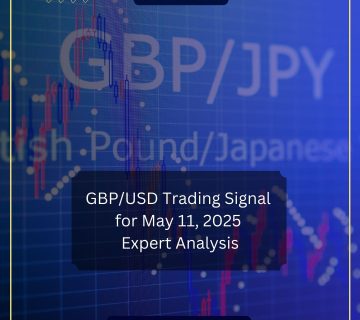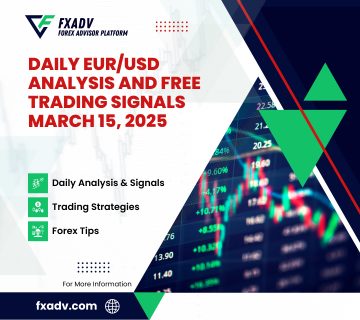Cryptocurrency Trading: Exploring the Future of Digital Assets
Cryptocurrency trading has become a major focus in the financial markets, attracting both novice and experienced traders. Unlike traditional assets like stocks or commodities, cryptocurrencies operate on decentralized platforms, offering unique trading opportunities and risks. This article will explore the basics of cryptocurrency trading, key strategies, examples of successful trades, and how technology continues to shape this dynamic market.
1. Understanding Cryptocurrency Trading
Cryptocurrency trading involves buying and selling digital currencies through online platforms known as exchanges. Unlike traditional fiat currencies, cryptocurrencies are based on blockchain technology, which provides a secure and transparent ledger for all transactions. The most popular cryptocurrencies include Bitcoin (BTC), Ethereum (ETH), and Ripple (XRP), but there are thousands of other altcoins available for trading.
Example: In December 2020, Bitcoin reached an all-time high of nearly $20,000, driven by increased institutional interest and economic uncertainty. Traders who bought Bitcoin in early 2020 at around $7,000 witnessed significant gains, showcasing the potential profits in cryptocurrency trading.
2. Types of Cryptocurrency Trading
There are several approaches to trading cryptocurrencies, each catering to different levels of experience and risk tolerance:
Cryptocurrency Trading: Exploring the Future of Digital Assets
- Day Trading: Involves opening and closing trades within a single day, aiming to capitalize on short-term price fluctuations. This strategy requires constant monitoring of the market and quick decision-making.
- Swing Trading: Focuses on capturing short- to medium-term trends. Traders may hold positions for days or weeks, depending on the trend’s strength.
- Scalping: A high-frequency strategy that targets small price changes over short periods. Scalpers may execute dozens or even hundreds of trades daily, relying on liquidity and low transaction costs.
- Position Trading: A long-term strategy where traders hold positions for months or even years, based on fundamental analysis and market trends.
Cryptocurrency Trading: Exploring the Future of Digital Assets
3. Cryptocurrency Exchanges and How They Work
Cryptocurrency exchanges are online platforms that facilitate the buying, selling, and trading of digital assets. Some of the most well-known exchanges include Binance, Coinbase, and Kraken. These platforms offer various features such as spot trading, margin trading, futures contracts, and staking opportunities.
Example: Binance, one of the largest exchanges globally, provides traders with access to hundreds of cryptocurrencies, various trading pairs, and advanced tools like leverage and futures contracts. In 2021, Binance saw a record daily trading volume of over $76 billion, highlighting the increasing popularity of digital assets.
4. Key Trading Strategies for Cryptocurrencies
Successful cryptocurrency trading relies on implementing effective strategies. Here are some of the most commonly used methods:
Cryptocurrency Trading: Exploring the Future of Digital Assets
- Technical Analysis: Involves studying price charts, volume indicators, and technical patterns to predict future price movements. Tools like moving averages (MA), Relative Strength Index (RSI), and Bollinger Bands are popular among technical traders.
- Fundamental Analysis: Focuses on evaluating a cryptocurrency’s underlying technology, use case, development team, and market potential. Traders analyze factors such as network activity, developer updates, and partnerships to determine a coin’s long-term viability.
- Arbitrage: A strategy that involves buying a cryptocurrency on one exchange at a lower price and selling it on another for a higher price. Arbitrage opportunities arise due to price discrepancies across exchanges.
- Dollar-Cost Averaging (DCA): A conservative approach where traders invest a fixed amount in a cryptocurrency at regular intervals, regardless of market conditions. This reduces the impact of volatility and mitigates risks associated with market timing.
5. The Role of Technology in Cryptocurrency Trading
Technology plays a pivotal role in the cryptocurrency trading landscape, offering advanced tools and platforms that streamline the trading process:
- Trading Bots: Automated trading systems that execute trades based on pre-set parameters. These bots are designed to monitor the market 24/7, making decisions without human intervention.
- Blockchain Technology: The decentralized and transparent nature of blockchain makes it a secure and efficient medium for digital transactions. Smart contracts, decentralized finance (DeFi), and tokenized assets are some of the innovative applications driving the crypto space.
- Mobile Trading Apps: Platforms like Coinbase Pro and Kraken Pro allow traders to monitor and execute trades on the go. Mobile trading apps have democratized access to the crypto market, allowing anyone with a smartphone to participate.
Example: In 2021, the decentralized finance (DeFi) sector experienced explosive growth, with platforms like Uniswap and PancakeSwap enabling users to trade directly without intermediaries. This technology, based on smart contracts, has reshaped traditional trading models by providing liquidity and creating a new paradigm of financial interaction.
6. Risk Management in Cryptocurrency Trading
Cryptocurrency trading can be highly volatile, making effective risk management essential for long-term success. Here are some key practices:
- Stop-Loss Orders: Automated instructions to sell a cryptocurrency when it reaches a specific price, limiting potential losses.
- Take-Profit Orders: Pre-set conditions to sell an asset when it hits a target price, ensuring traders lock in profits.
- Portfolio Diversification: Spreading investments across different cryptocurrencies to reduce exposure to any single asset’s risks.
- Leverage Trading: Involves borrowing funds to increase trading position size, amplifying both potential gains and risks. This should be used cautiously and only by experienced traders.
Example: In April 2021, a sudden market crash wiped out billions from the crypto market. Traders who used stop-loss orders managed to exit their positions early, minimizing losses, while those without risk management strategies faced significant setbacks.
7. Real-World Impact of Cryptocurrency Trading
The rise of cryptocurrency trading has not only impacted financial markets but also broader society. Many early Bitcoin adopters have become millionaires, while institutional investors like Tesla and MicroStrategy have allocated billions to digital assets. The entry of major players into the crypto space has further legitimized it, with Bitcoin being dubbed “digital gold.”
Example: In February 2021, Tesla announced a $1.5 billion Bitcoin investment, causing the cryptocurrency’s price to surge. This move marked a significant milestone, demonstrating institutional confidence in cryptocurrencies as a store of value and investment asset.
8. The Future of Cryptocurrency Trading
The future of cryptocurrency trading is expected to be shaped by regulatory developments, technological innovations, and increased adoption by institutional and retail investors. Emerging trends like non-fungible tokens (NFTs), Web 3.0, and the metaverse are likely to introduce new trading opportunities, while regulations will play a crucial role in ensuring market stability.
Example: The launch of Bitcoin ETFs (Exchange-Traded Funds) in 2021 provided a more accessible entry point for traditional investors, allowing them to gain exposure to Bitcoin without directly holding the asset. This move signaled a shift toward mainstream acceptance and paved the way for further institutional involvement.
Conclusion
Cryptocurrency trading offers an exciting yet challenging opportunity for those willing to navigate its complexities. From understanding blockchain technology to mastering trading strategies, being informed and equipped with the right tools is key to success. As the digital landscape evolves, staying updated with the latest trends and developments will be crucial for traders looking to thrive in this fast-paced environment.
Algorithmic Trading: The Future of Technology-Driven Financial Markets
Learn Forex for all levels for free














